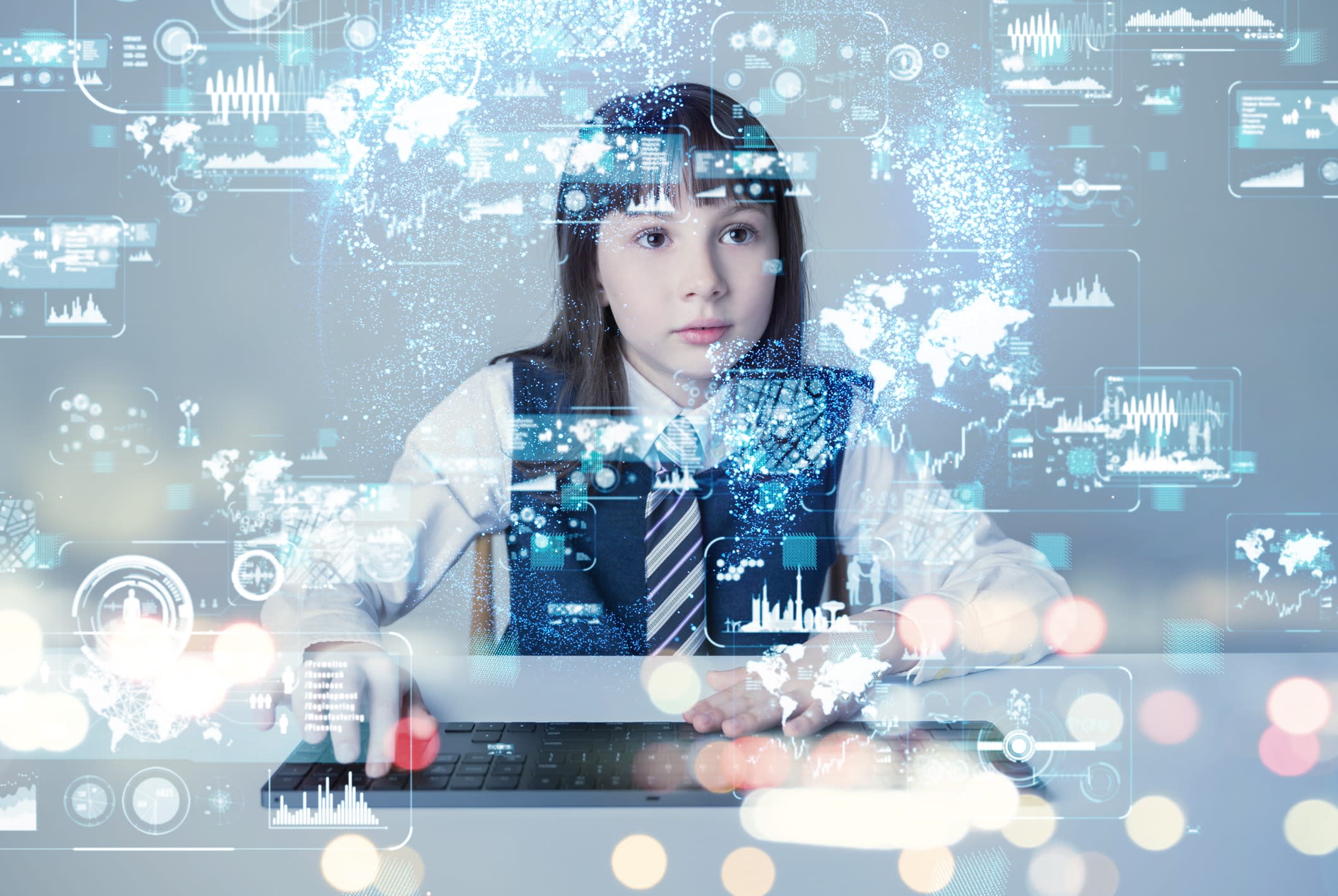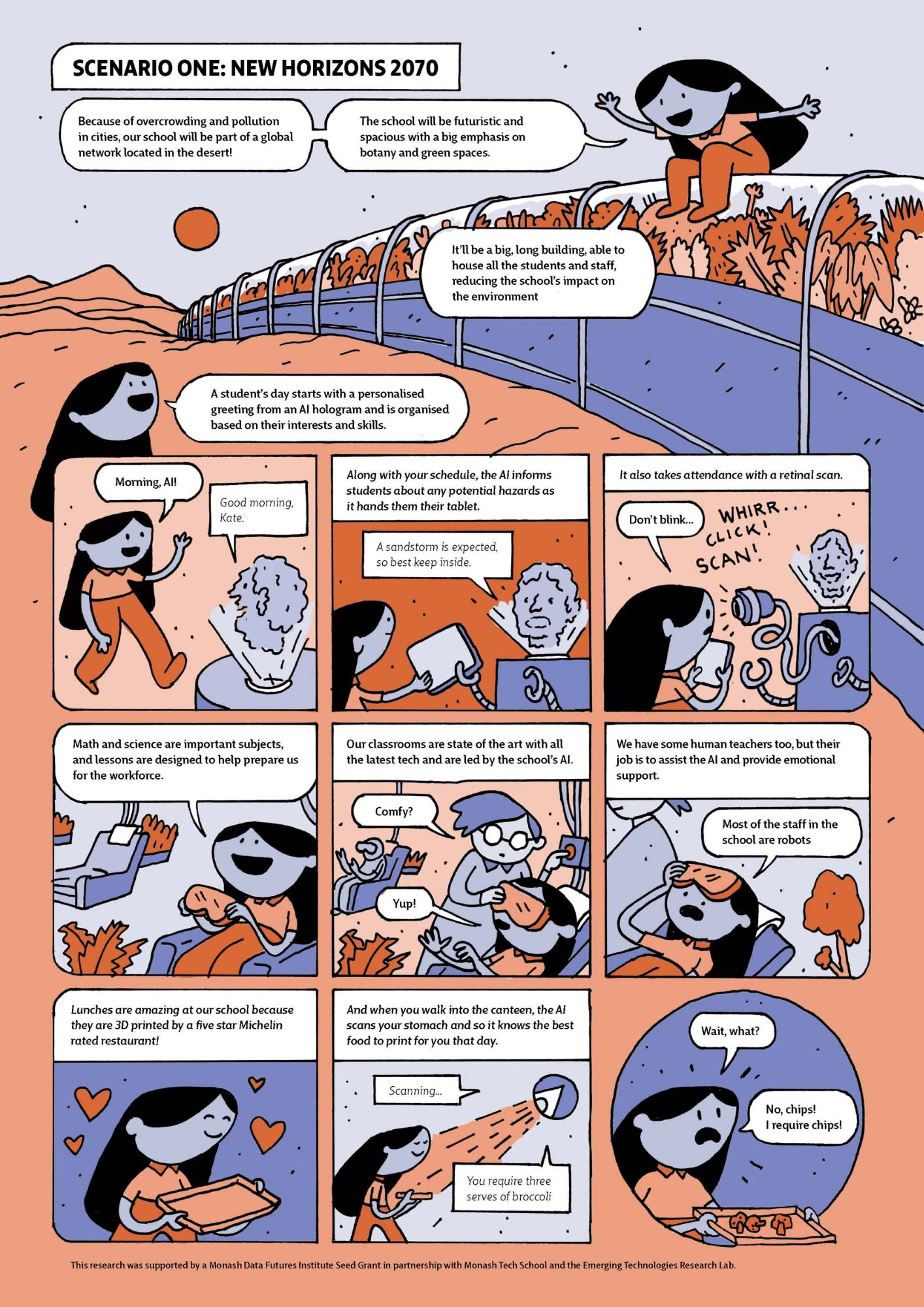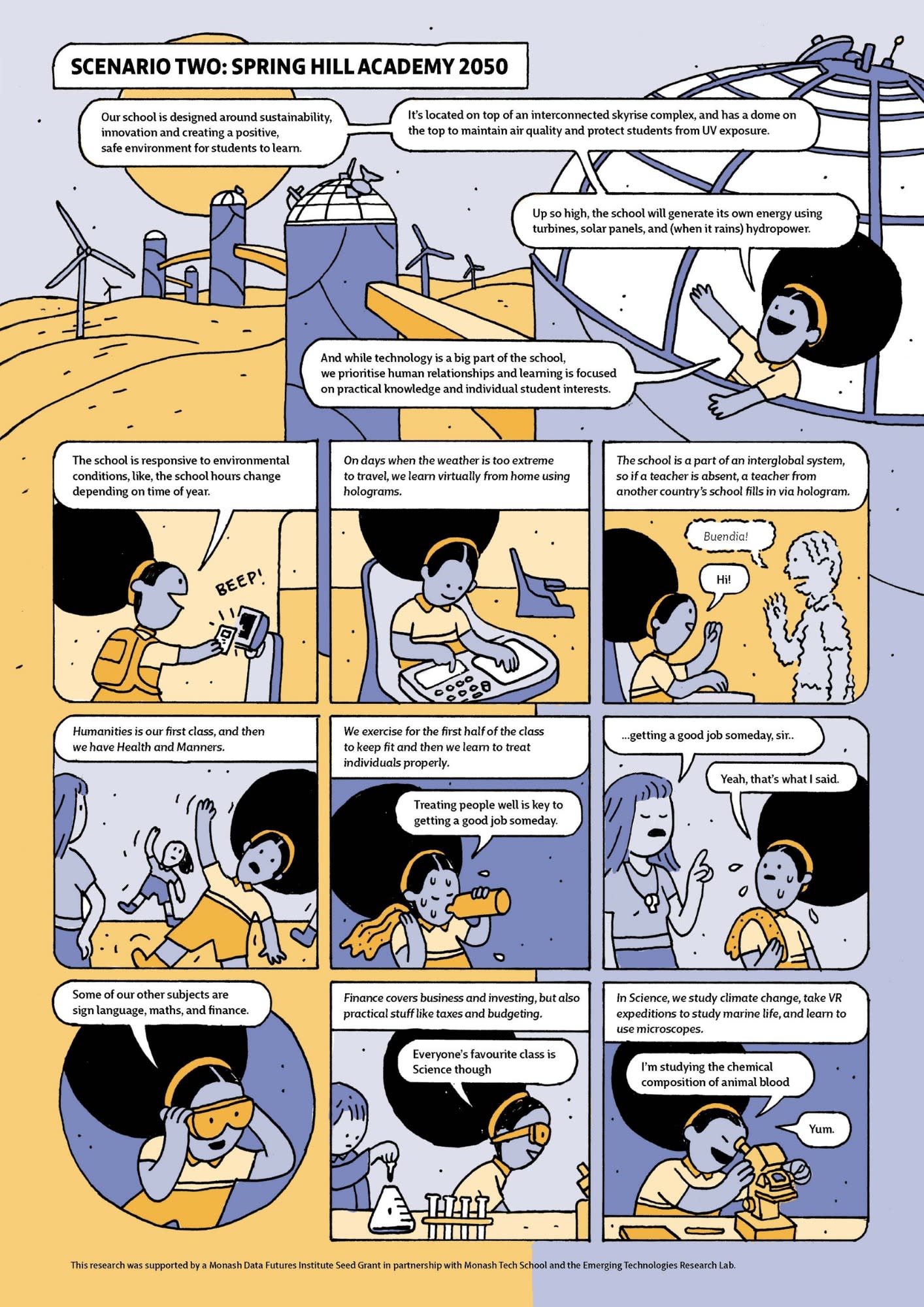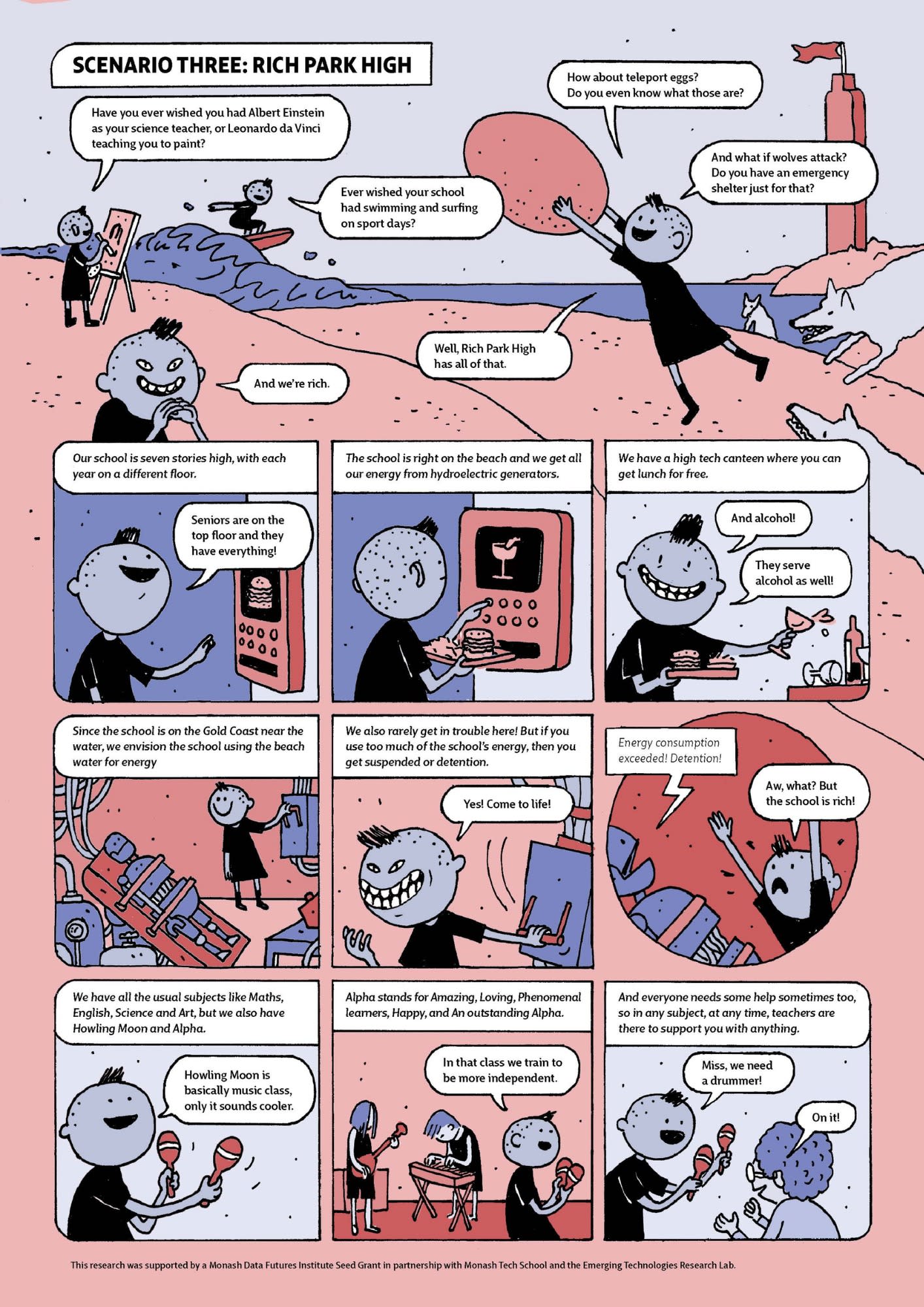The push for increased use of technologies such as ChatGPT in schools comes with bold promises from education policymakers, businesses and the IT industry that AI will transform schools and lead to radically different forms of education.
But, while the visions crafted by “industry stakeholders” and “education experts” are important, a crucial voice is largely missing from the scenario-building process – that of students themselves.
When young people are involved in speculating about future schools, they raise a range of ideas and agendas that are currently sidelined in mainstream discussions – including what traditional aspects of schooling we should be looking to keep.
Our research project explores what different insights emerge when young people are asked to imagine what the AI school of the future might look like.
These “School of the Future” scenarios help spark discussions and better prepare for technological, economic, societal and environmental changes in education.
They’ve become increasingly popular among policymakers anticipating the impacts of emerging technologies. In more recent years, the scenarios have become particularly important for all stakeholders navigating the revolutionising potential of artificial intelligence on the education sector.

To get a better understanding of how AI is expected to impact schooling, we reviewed 70 schools of the future from 18 industry reports. We found that discussions were dominated by a technology-centric focus, envisioning AI learning agents, virtual teachers, and automated assessments.
This approach neglected crucial insights from futures studies and education research that reveal a more complex landscape of social, environmental and cultural factors shaping the years to come.
For instance, the scenarios failed to consider how increasing extreme weather events might affect schooling practices. Additionally, they ignored the growing energy implications of widespread AI use, offering no solutions for managing or offsetting this demand.
The scenarios also lacked evidence-based data anticipating how schools and children would actually adopt and shape use of these technologies.
To address this gap, we’ve been working with Monash Tech School to develop a world-first “AI energy futures” curriculum and learning resource for teachers to engage students in futures thinking.
AI Energy Futures school curriculum
We believe schools of the future should be reimagined from a top-down approach towards a collaborative effort that puts student voices at the centre.
Participating in the scenario-building process can be a valuable tool for developing young people’s ability to think about the future, and for challenging the underlying assumptions of current school scenarios.
This is particularly important considering the expectation of AI to revolutionise everyday schooling practices and the anticipated changes in future energy and environmental systems.
As an interdisciplinary team of energy futures researchers, computer scientists, anthropologists and sociologists of education and digital technology, our research consistently shows how energy systems and digital technologies are shaped by people’s expectations and use.
We wanted to help students discover the AI and energy impacts in their schools, and explore how progress could then be made towards desirable “AI energy futures”.
We piloted a curriculum over three days with 70 students from two Melbourne-based high schools (years 7-9), showing them how data centres hosting AI computing systems consumed an estimated 240-340 terawatt hours globally in 2022, and how emerging AI technologies like ChatGPT, Google Bard and augmented reality are further increasing this demand.
Alongside discovering the AI and energy impacts of their school, we asked students to think about:
- how they might learn during periods of intense heat
- to what extent they want school to embrace AI
- how the energy demands could be managed.
To guide the development of their scenarios, students used generative AI tools and a series of flash cards that contained common future expectations drawn from industry scenarios.
By prompting students to consider scenarios such as “a private company runs the school” or “school is completely virtual”, they were able to engage within the scope of possibilities already set by current scenarios. Then, by introducing a set of wildcards with various climate, AI and energy futures, students were prompted to think beyond the boundaries of what is currently envisioned.
We had these student-generated scenarios professionally illustrated, bringing to life their visions of:
- 3D-printed gourmet meals, and VR marine life expeditions

- Sustainable sky schools powered by wind turbines

- Beach schools with hydroelectric systems

Reflecting on the project with students
We gained several key insights about futures thinking and energy education from teaching children about AI, energy, and climate relationships.
- Scenario-building helps students gain a sense of control over futures that may otherwise appear predetermined as bleak, as one student remarked:
“A lot of videos on YouTube show the future as a negative thing, like there's going to be wars and global warming will ruin the planet. But future schools have helped me see the future in a positive way.”
- Scenario-building can increase awareness of complex issues, as one student remarked:
“When we learned that servers for data use a lot of water, it was quite shocking. I thought they just had one big fan cooling them down, but I never realised they would use so much water.”
- Scenario-building can be a useful way to help children think about the future, but children can struggle to identify the usefulness of thinking about things that might not even happen:
“Futures are very vague. You can't say, ‘This is going to happen in the future’ … So, students might like studying the past more because they know that ‘OK, this is set in stone’. I don't want to get my head wrapped around things that might not happen – I don't want to get so invested in these things.”
- Having experienced long bouts of COVID school lockdowns only a few years earlier, students unanimously imagined the continuation of schools and teachers – especially in terms of providing a sense of security, reassurance and social contact:
“Human teachers provide emotional support. Real people have a better emotional connection to the students and really care about them, unlike a robot.”
- This cohort of 12 and 13-year-olds remained relatively unconcerned by more catastrophic visions of climate change: “... this generation are not really into it.” There was a general confidence in the widespread take-up of renewable energy sources, and the expectation that climate change is something that current adult generations need to take responsibility for.
By empowering students to participate in shaping their future, we can accomplish two important goals.
First, we foster futures education, giving students the tools to think critically about what's to come. Students who understand these issues are better-equipped to participate in discussions about technology and sustainability.
Second, we amplify young people's voices, allowing their expectations and ideas about alternative futures to be heard, potentially leading to more effective and student-centric education policies and practices.
This research was supported by a Monash Data Futures Institute seed grant in partnership with Monash Tech School and the Emerging Technologies Research Lab. The project team thanks the students and teachers from Glen Waverley Secondary College and Wheelers Hill Secondary College for their participation in the research. The authors would also like to thank Neil Carmona-Vickery and Chelsea Watts from Monash Tech School.











